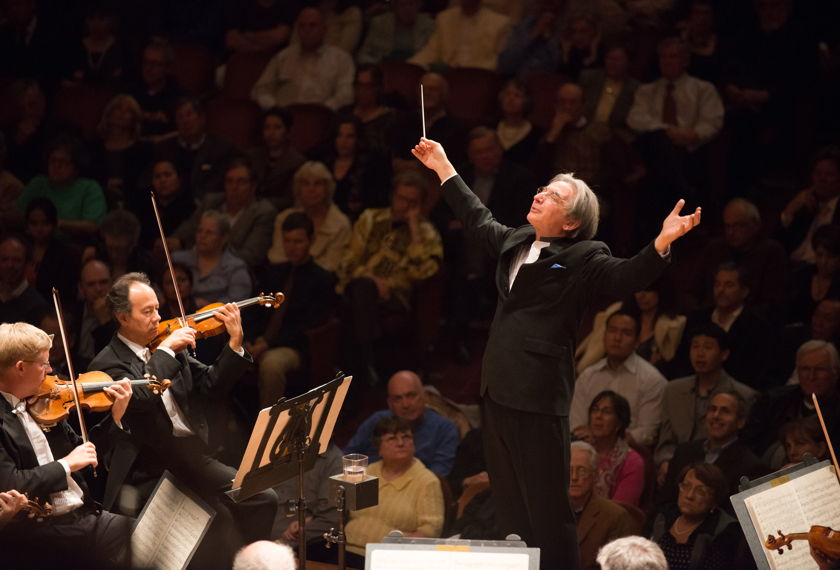
On Sunday, the day of the broadcast of the Kennedy Center Honors, in which the American conductor Michael Tilson Thomas (MTT) was an honoree, he conducted the Los Angeles Philharmonic Orchestra in the Piano Concerto No. 1, Op. 23 by Tchaikovsky, with the young Russian pianist Daniil Trifonov, and the Symphony No. 3 by Copeland.
MTT opened the concert with an orchestral oddity, Dibinushka (The Oaken Cudgel), by Rimsky-Korsakov. The four-minute piece is his orchestral arrangement of a popular Russian folk song, which became a theme song for the 1905 Russian Revolution. It was mostly sung by workers and is named for the tool (the oaken cudgel) used by supervisors to beat workers. As are all of Rimsky-Korsakov orchestral works, Dibinushka is masterfully orchestrated, beginning with a march full of brass before quieting down with the strings and, finally, concluding triumphantly.
The story of Tchaikovsky’s famous piano concerto is well known: He originally planned to dedicate the concerto to the pianist Nicolai Rubenstein, but when Rubenstein played it he rejected it as “unplayable” and “vulgar.” So, without hesitation, Tchaikovsky dedicated it to the German pianist and conductor Hans von Bulow, and the rest, as they say, is history. It is now one of the most famous, well-known and often-played concertos in the repertory; a true warhorse. So, when it is played now, the only question is how will the soloist and conductor approach it?

With star power such as MTT and DT, many in the audience waited with baited breath. And they weren’t disappointed. Trifonov played with abandon and unbridled energy and power. In fact, he played so hard that the top of the Steinway grand shook like an earthquake was hitting WDCH. This was not a nuanced performance by Trifonov: It was man vs. piano, and man won. That’s not to say that when the concerto called for it, he didn’t play lightly; but it wasn’t often. After watching Trifonov’s performance, one could almost see Rubenstein’s point; but Trifonov (like many other pianists) was able to pull it off. MTT and DT barely looked at one another, but despite what looked like MTT backing off, it was clear that keeping up with Trifonov wasn’t an easy task. That’s not to say that the tempos were too fast, however. In fact, if anything, the tempos were on the slower side, but the effect was the opposite. As always, the musicians of the Phil were outstanding in their accompaniment, which was appreciated by both MTT and DT.
At the conclusion, the audience erupted in cheers and brought DT out for an encore of — what else? — another Russian showpiece: the Étude, Op. 42, No. 5 in C-sharp minor by Alexander Scriabin. In both pieces, Trifonov showed himself to be a master of his instrument.
The second half was devoted to the Copeland third symphony. Composed in 1944 with WW II still raging, this symphony is one of grandeur and optimism. It may (or may not) be the Great American Symphony, but it is a great American symphony. It is distinctly American and distinctly Copeland. And its performance by an American conductor with a great American orchestra represented a perfect combination. MTT’s conducting was very understated. He seemed to know that the orchestra doesn’t need as much direction as some conductors give them. His movements were not showy, but the approach was effective.
The symphony is in the traditional four movements. The fourth movement — Molto deliberato-Allegro risoluto — begins with refrains from Copeland’s famous Fanfare for the Common Man, the theme of which Copeland then varies until the final glorious conclusion with throbbing timpani and bass drum and unrestrained brass.
A final word must be added about WDCH because where else would one want to hear a great American symphony performed by a great American orchestra than in one of the great American concert halls? Case closed.
—Henry Schlinger, Culture Spot LA
Visit www.laphil.com.





